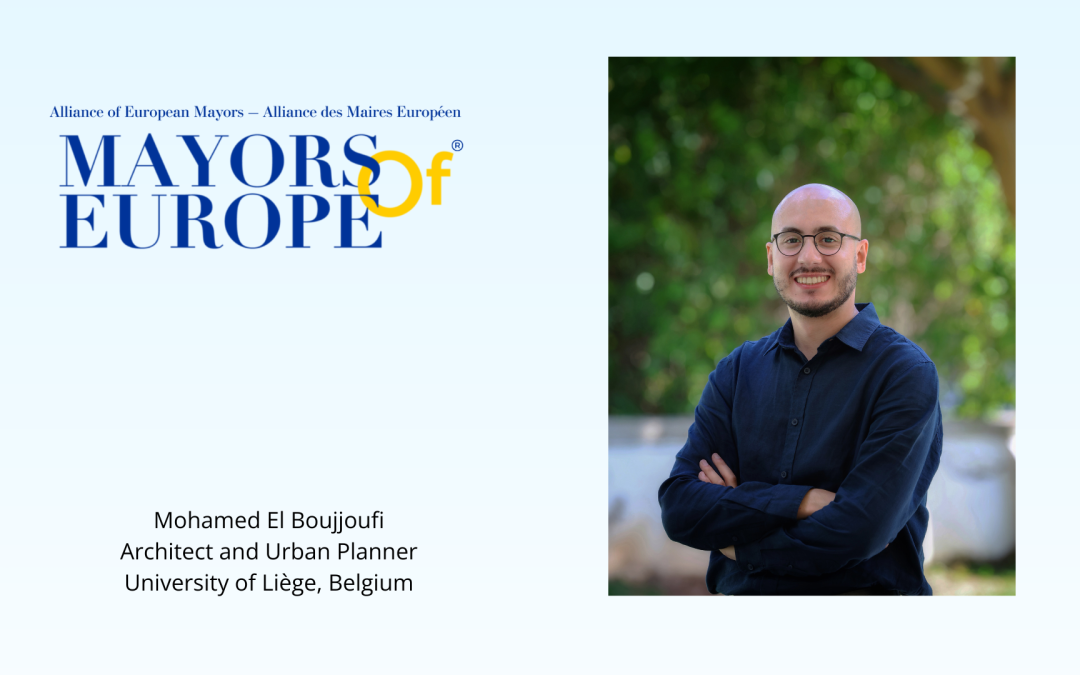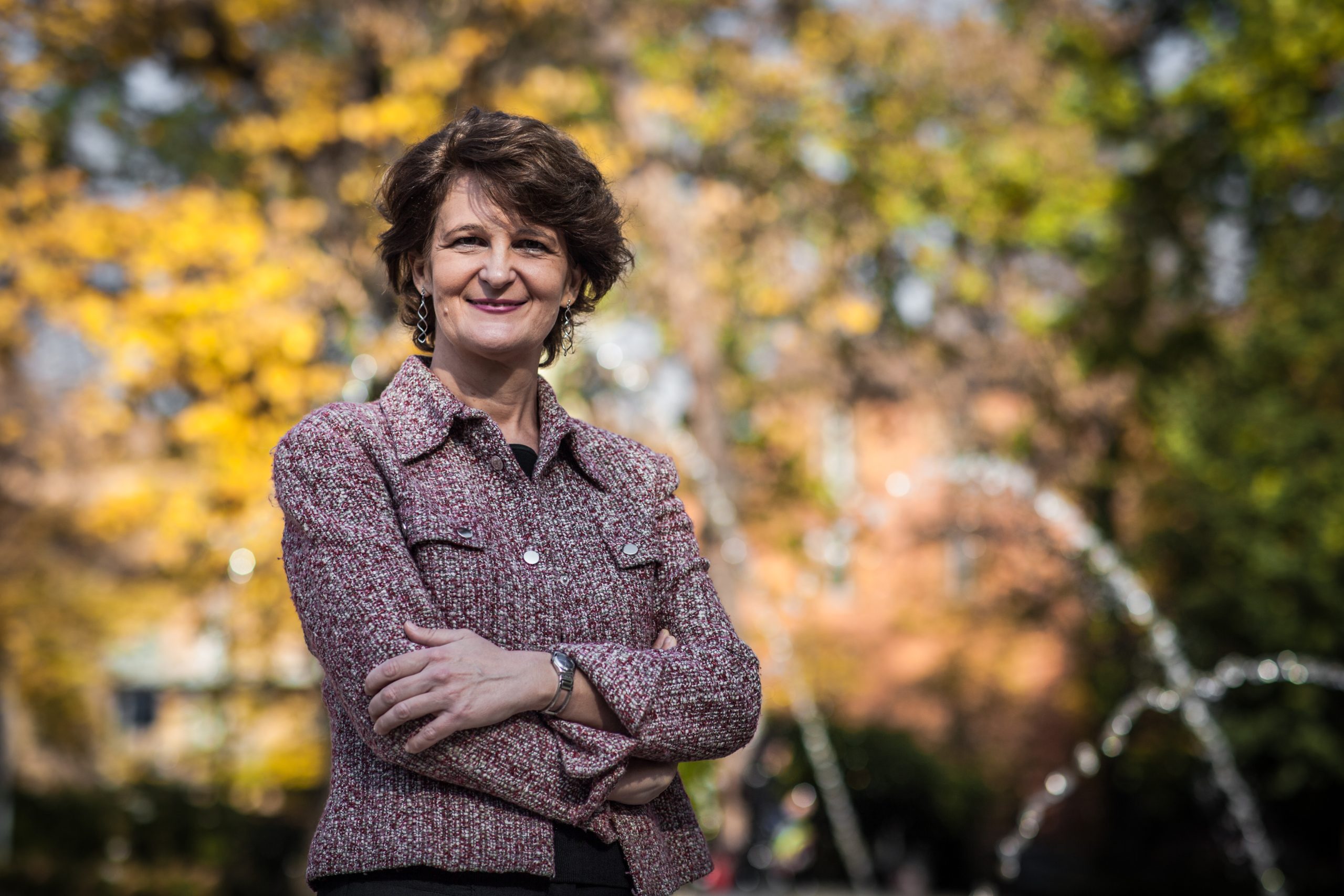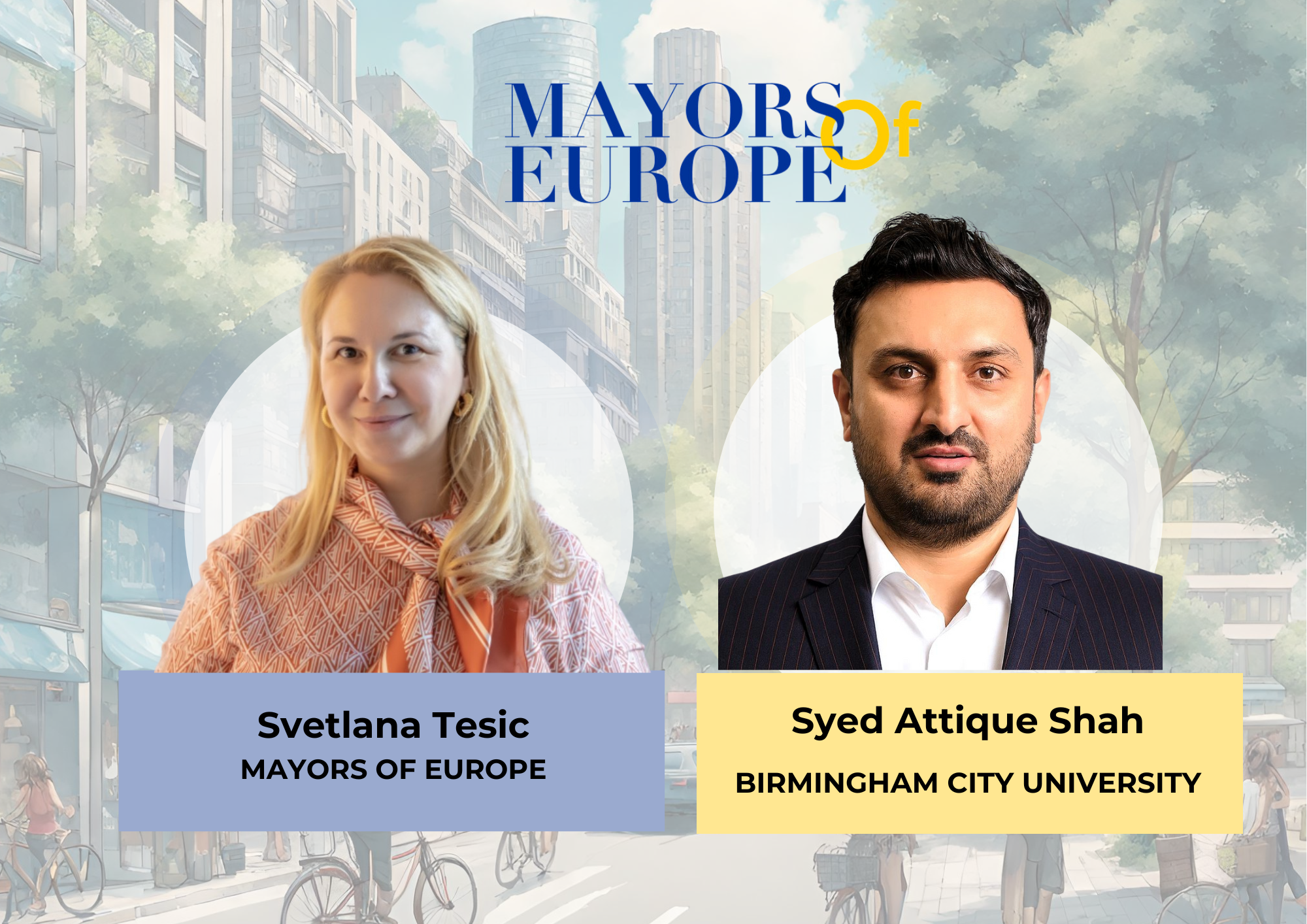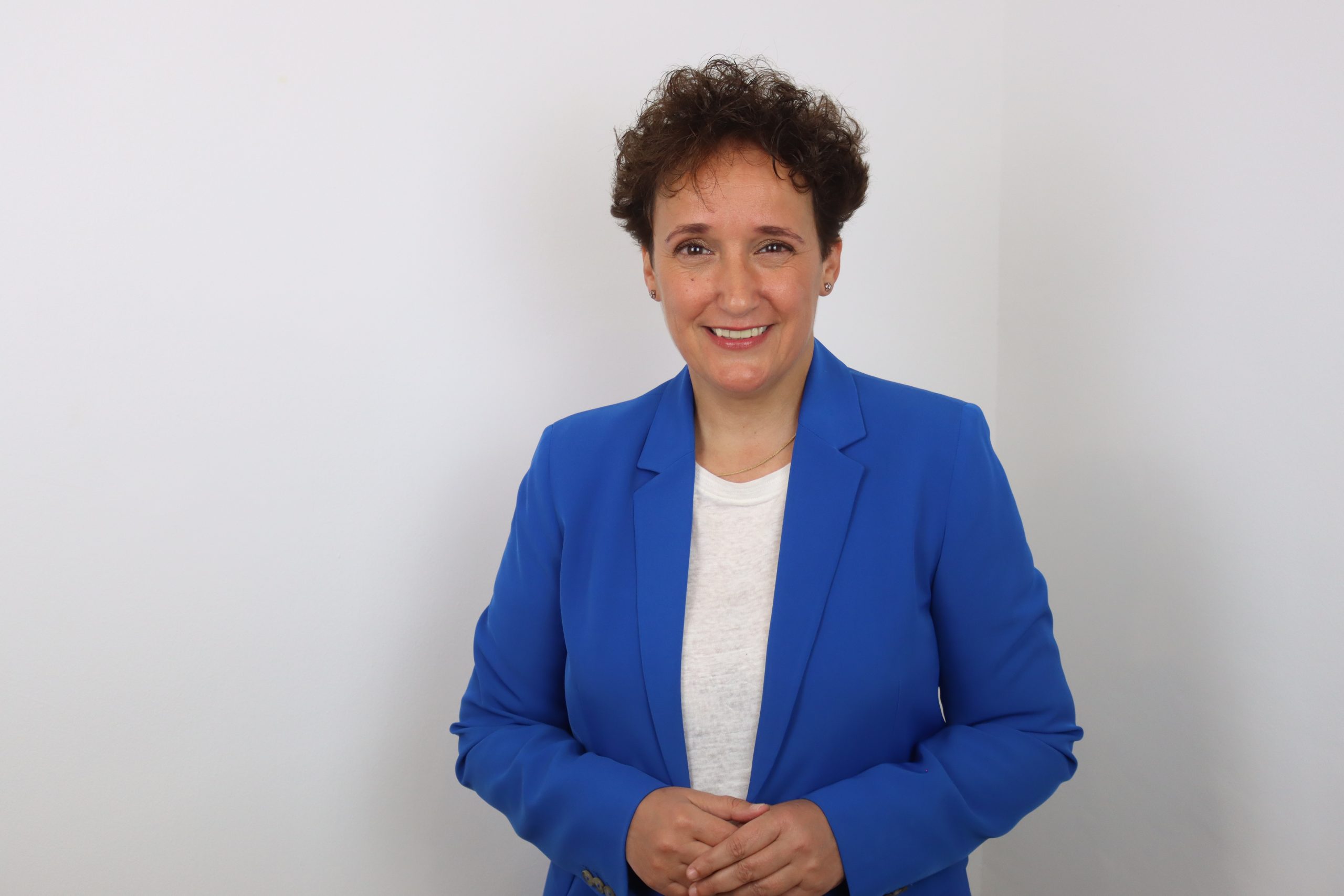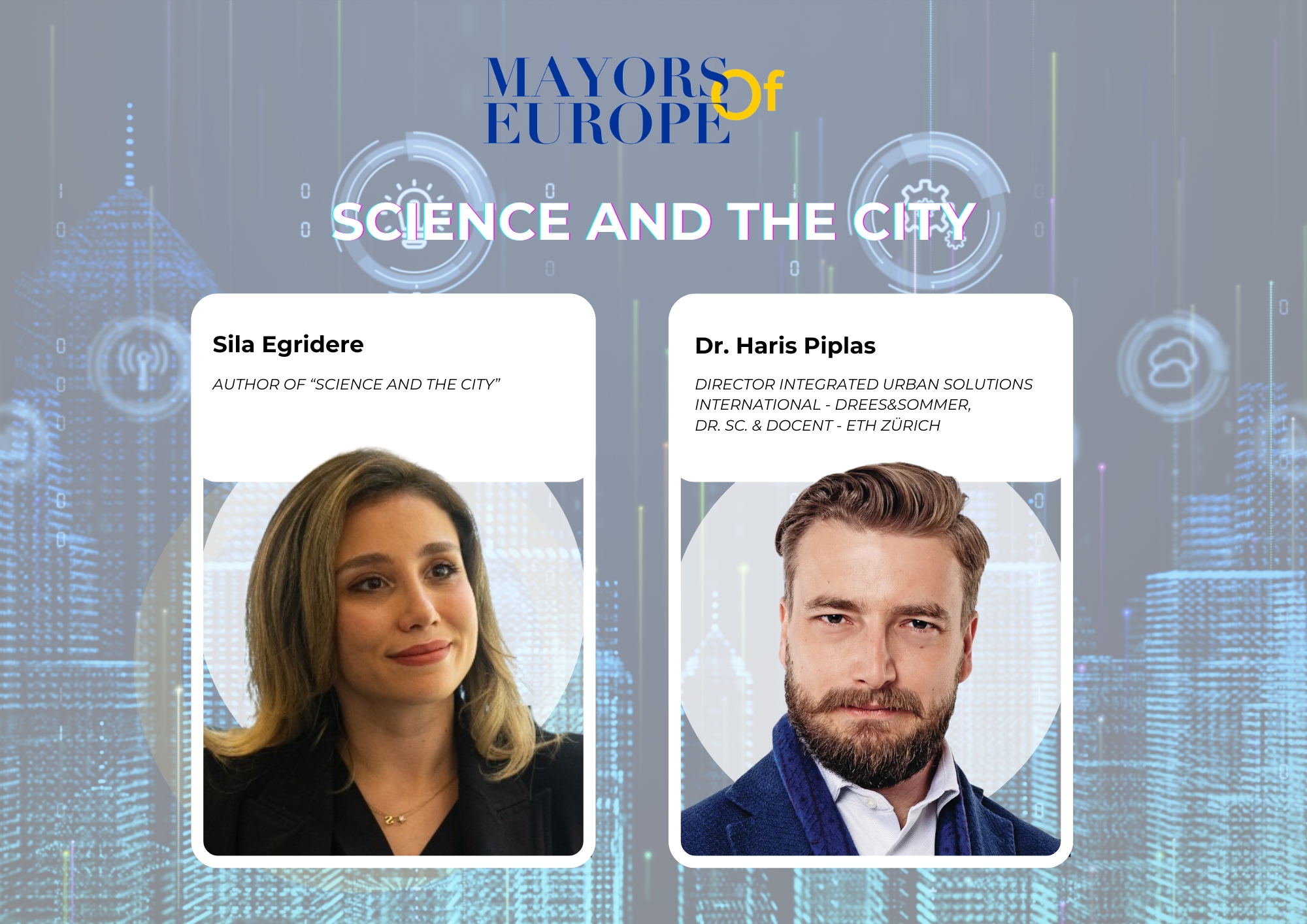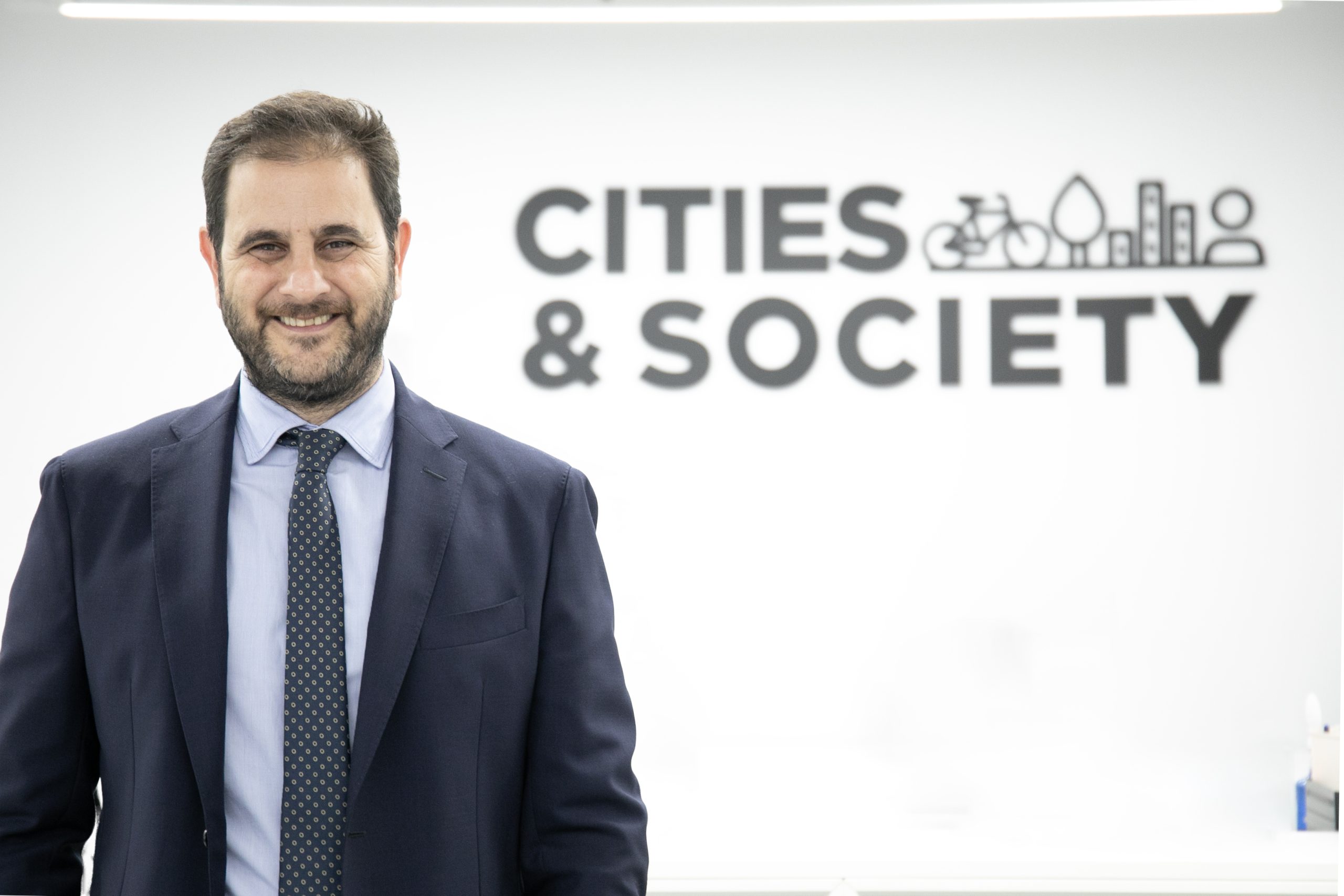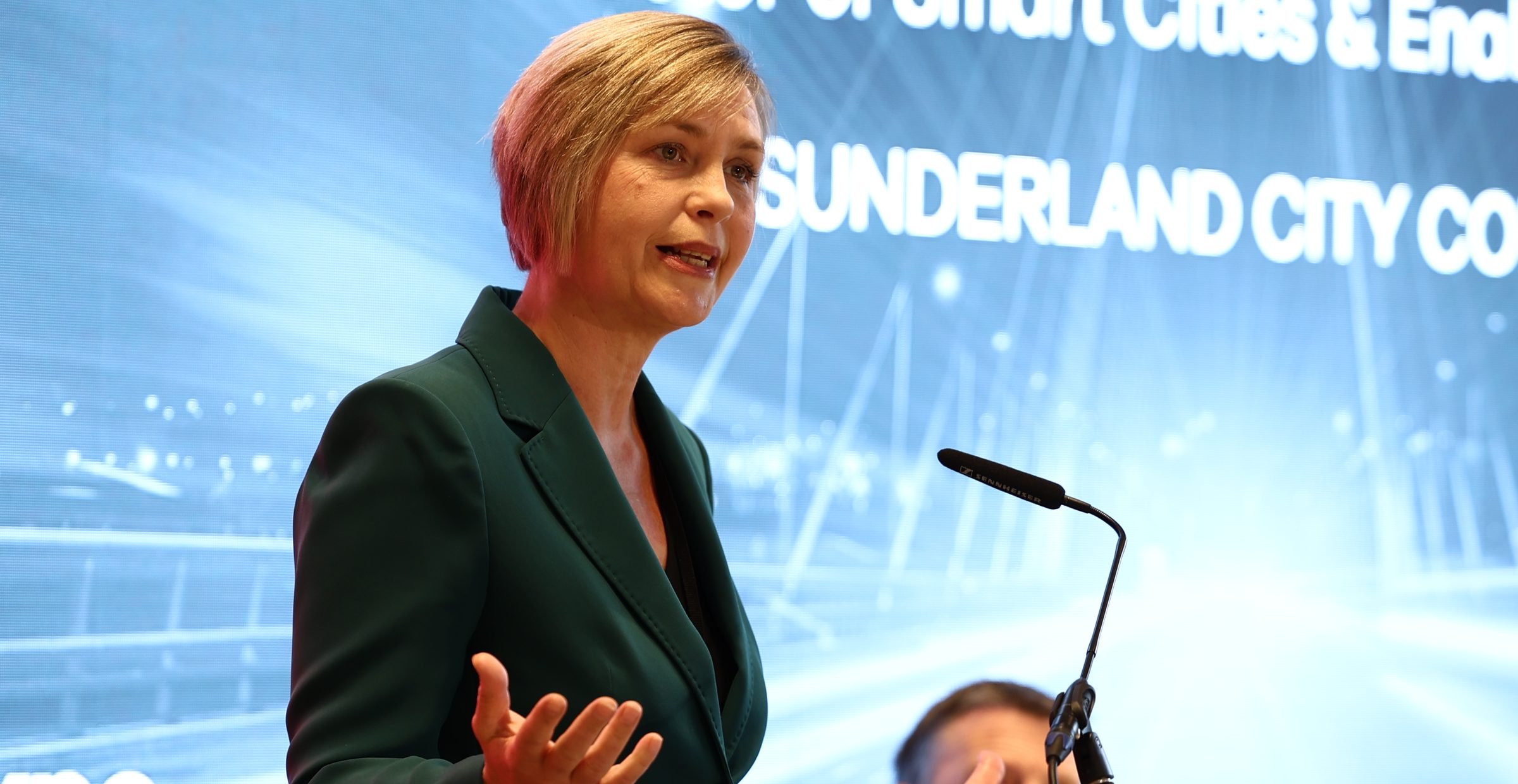Cities That Listen: Co-Creating Urban Futures with People at the Center
Mohamed El Boujjoufi is an architect, urban planner, lecturer, consultant, and researcher at the University of Liège, Belgium. His work lies at the intersection of urban sociology and spatial planning, with a particular focus on the social and spatial dimensions of cities. Through his research on mosques in Europe, he explores the integration of Islamic places of worship within the urban fabric, shedding light on broader questions of visibility, belonging, and spatial justice. He has also developed and tested innovative methodologies for inclusive urban planning, particularly the involvement of citizens and users in shaping spaces and territories. As a contributor to several European research and innovation projects, Mr El Boujjoufi has played a key role in challenging traditional top-down planning approaches by promoting participatory and community-led processes.
Mr. El Boujjoufi, You’ve worked at the crossroads of architecture, urban planning, and social inclusion. How would you describe what makes a city truly inclusive in 2025, and what key ingredients are needed to bring that vision to life?
An inclusive city, whether in 2025 or beyond, is one that leaves no one behind. It embraces the diversity of its people (social, cultural, religious, generational) not as a challenge, but as a real asset for transformation.
Being inclusive means more than inviting people to participate; it’s about giving them real agency. It’s about allowing citizens to shape their environment, influence decisions that affect their daily lives, and imagine the city together with institutions. In some cases, we even see forms of co-management, where citizens help govern public spaces, projects, and sometimes even services.
I’ve seen this work in projects like UrbiNat or N-POWER, especially through Urban Living Labs. These labs aren’t just spaces for innovation; they’re spaces where responsibilities are shared, and decisions are co-created. They help shift the relationship between public authorities and citizens from one-off consultations to long-term partnerships. But inclusion also means putting social and spatial justice at the heart of planning. That involves rethinking how we design mobility, use public space, and ensure fair access to resources, especially for those whose voices are often left out. And of course, it requires institutional courage: the willingness to move beyond top-down approaches, to recognize local knowledge, and to work with people as experts of their own territories.
From your experience with research-action projects, like UrbiNat, what are some of the most promising nature-based or community-led innovations you’ve seen in European cities?
What I find most inspiring right now in European cities isn’t so much about impressive infrastructure or iconic buildings. It’s more about the collective processes that are changing the way cities are made, especially when they emerge from the ground up.
One powerful example is the use of Urban Living Labs as frameworks for co-creation. We’ve seen this clearly in the UrbiNat project, where residents, city officials, researchers, and local stakeholders came together to design and implement solutions in a truly collaborative way.
In these labs, citizens are no longer just consulted; they become real partners. They bring ideas, lived experience, and local knowledge to the table. And in many cases, this has led to the creation of news initiatives often built in marginalized neighborhoods. But these corridors aren’t just about planting trees or improving the landscape. They reconnect parts of the city that were left behind, while promoting health, wellbeing, and social ties.
What’s really powerful is the way these initiatives combine ecological transition with social inclusion. When nature-based solutions, for example, are co-designed with local communities, they respond to multiple issues at once: environmental challenges, spatial inequalities, democratic participation, and quality of life.
These aren’t high-tech solutions; they’re simple, grounded, and deeply human. And they remind us of something essential: the future of our cities won’t come from top-down planning alone. It’s being built, every day, with and by the people on the ground.
As an architect and engaged academic working on contemporary urban issues, what vision drives your commitment to more just and sustainable cities?
In a world increasingly marked by fragmentation, I believe our collective responsibility, as urban planners, architects, researchers, public actors, or citizens, is to put human connection back at the heart of city-making. A city can no longer be conceived as just a technical or aesthetic object. It is, above all, a lived space, shaped by memories, tensions, and inequalities, but also by solidarity, creativity, and shared aspirations.
What seems essential today is to defend an approach to urban development that is more humble, more grounded, and more attentive. A city that builds upon the lived experiences of those who inhabit it, work there, raise families, and grow old. Too often, urban policies are drafted far from people’s daily realities. Yet it is precisely by starting from actual use, local stories, and everyday needs that we can build a more just and inclusive city. I strongly believe in cross-disciplinary and open approaches, where residents, institutions, associations, and researchers co-construct responses, rethink governance, and, where appropriate, experiment with shared or co-managed solutions. This requires creating spaces for dialogue, mutual learning, and recognition of local knowledge.
There are many aspirations for better cities, but one thing is clear to me: urban transitions, ecological, social, and democratic, will only succeed if they are anchored in the everyday lives of people. And if they go hand-in-hand with a real shift in posture, from both institutions and professionals, toward listening, sharing, and political courage.
You often emphasize the role of social cohesion in city life. In increasingly diverse urban settings, how can public spaces be designed and managed to bring people together rather than divide them?
Public spaces have incredible power; they can either connect people or keep them apart. In diverse urban contexts, it’s up to city leaders to make sure these spaces become places of belonging, not exclusion.
And that starts with listening. Too often, public spaces are designed without really understanding how people live, move, and feel in those places. What might seem “neutral” from a design perspective can actually feel cold, unwelcoming, or even unsafe for certain communities. But when citizens are involved from the very beginning (during the diagnosis, the planning, the imagining), public space becomes something else entirely. It reflects the community. It carries memories. It creates pride.
So, it’s not just about designing nice parks or plazas. It’s about making sure these spaces are accessible, safe, multifunctional, and open to all forms of expression; cultural, political, and intergenerational. And yes, that may mean letting go of some standardized models to create more flexible, hybrid, and inviting places.
To me, turning public space into a bridge means embracing it as a living, dynamic space. Sometimes even a space of tension, but always a space where people can meet, express themselves, and share the city. That’s where mayors have a real opportunity: to support participatory approaches that pay attention to everyday life, not just grand designs. Because in the end, social cohesion often starts with the little things: how we feel in a place, whether we see ourselves reflected there, and whether we feel like we truly belong.
You’ve done research on urban dynamics in North Africa and Europe. What lessons can European cities learn from African urban traditions or vice versa?
There’s a lot both can learn if we’re willing to move beyond top-down approaches and stop treating one model as universal.
What strikes me most in many African cities is their resilience and creativity, even in the face of limited resources. You often see communities organizing themselves, adapting quickly, and reimagining public space with incredible flexibility. People turn what’s available into solutions. Urban space becomes a canvas for everyday ingenuity, constantly evolving, deeply rooted in social ties and local culture.
That kind of adaptability is something European cities could learn from, especially in a world that’s changing so fast. Urban planning doesn’t always need to start with large-scale infrastructure; it can start with what’s already there, with people’s habits, and with local knowledge.
Now, of course, European cities bring valuable tools to the table: planning systems, participatory processes, and environmental standards. But these tools only work when they’re grounded in real life. It’s not about exporting methods, it’s about translating them to fit a place’s unique rhythm, culture, and needs.
So, rather than looking for “best practices” in the abstract, I think we need to recognize that every city has its own intelligence. The most meaningful urban approaches are those that listen first, whether we’re in Casablanca or Brussels, Abidjan or Nantes. City-making should start with people, their stories, and the places they have already shaped.
What potential do you see in digital tools and AI to strengthen participatory planning processes, especially for those whose voices are often left out of decision-making?
Digital tools and AI can be incredibly powerful, but only if they’re used with care and intention. They give us new ways to visualize urban projects, collect real-time data, and better understand how people interact with their environment. For instance, tools like sensors, anonymized cameras, or footfall counters can help cities track movement, identify underused spaces, or spot areas with unequal access. That kind of data, especially when combined with social or environmental indicators, can make urban planning more grounded in reality, less about guesswork, more about actual needs. AI also opens the door to processing huge volumes of information, from surveys to social media, and spotting patterns that would otherwise go unnoticed. It makes urban governance more agile, more responsive. But here’s the catch: technology alone doesn’t make a city more inclusive. If we’re not careful, it can do the opposite, widen the gap for groups that already struggle to be heard. That’s why it’s essential to embed these tools in an inclusive and ethical process: one that includes support, mediation, and clear communication.
From my experience, the most effective use of digital tools happens when they complement, not replace, on-the-ground participation. They can amplify voices, highlight overlooked needs, and support better decisions. But they don’t substitute for human connection, trust, or co-creation. In short, what matters is not the technology itself, but how it’s used, for what purpose, for whom, and with whom. If we use them wisely, they can make participatory planning not just faster or smarter, but fairer, more transparent, and truly centered on people.
Cities are hubs of innovation and experimentation. In your view, what place should citizens hold in shaping urban futures, and which participatory methods have proven most effective?
Citizens shouldn’t just be consulted after decisions are made; they should be involved from the start. After all, they’re the ones who know the daily life of a neighborhood: what works, what doesn’t, where the real needs are. Co-creating the city means valuing that everyday knowledge and treating residents as partners, not end users. Real co-creation starts early: during diagnosis, when setting priorities, and especially when designing solutions. It’s a demanding process; it takes time, trust, transparency, and the willingness from institutions to let go of control. But when it’s done right, the results are far more meaningful and lasting. What methods work best? Honestly, the most effective ones are often a mix of formats: community workshops, walking tours, participatory mapping, even small-scale construction projects where people can get involved hands-on. And of course, accessible digital tools can help broaden engagement, but only if they’re combined with face-to-face dialogue.
One group we often forget to include meaningfully is young people. And yet, when you bring them in, not just as decoration, but as active contributors, you see real impact. In projects where young people co-designed public amenities or took part in neighborhood planning, we saw something remarkable: spaces were better maintained, vandalism dropped, and a strong sense of ownership emerged. Why? Because they felt seen, and they had a stake in it.
Urban Living Labs offer a great example of how to structure this kind of collaboration. They create a space where residents, young people, local officials, and researchers can build ideas together on equal footing. And maybe that’s the real innovation we need: not just new urban forms, but new relationships between citizens and institutions, rooted in dialogue, trust, and shared responsibility.
Your work touches on gender, migration, and identity in urban contexts. How should these themes inform the policies of today’s city leaders?
I think we need to start by recognizing that cities are never neutral. They reflect, and often reinforce, social dynamics, including inequality, exclusion, and invisibility. Gender, migration background, cultural identity, social class, age… these aren’t side issues. They’re central to understanding how people live and move through urban space. For example, something as basic as where a bench is placed, how a park is lit, or who feels welcome in a square; these design choices can include or exclude, empower or alienate. That’s why inclusive urban policy has to begin with the lived experience of those who are often unheard: women, racialized communities, low-income groups, undocumented residents, and young people.
When we actively involve them, not just as token representatives, but as full participants, the city changes. It becomes more welcoming, more functional, more reflective of the people who live there. And it sends a powerful message: you matter here. But we can’t expect this transformation to come only from the citizens. Municipal leaders and staff need support and training, too. In many cities, there’s still a lack of culture around participation and inclusion. Or worse, misunderstandings, like thinking that “diversity” just means a cultural festival, or that asking people once for their opinion counts as co-creation. That’s not enough.
So yes, we need to strengthen both sides: citizens and institutions. Only then can we move from good intentions to meaningful change. And finally, I’d say this: conflict is not a failure, it’s a sign of life. When people care enough to disagree, to voice frustration, it shows they still believe in the city. The real challenge is to create spaces where those tensions can be heard, acknowledged, and worked through. That’s how we build truly inclusive cities, not by avoiding conflict, but by engaging with it openly and respectfully.
If you were to advise a newly elected mayor of a mid-sized European city, what would be your top three recommendations for shaping a healthy, inclusive urban future?
Given the social, environmental, and democratic challenges cities face today, I would suggest three priorities that I see as fundamental for any municipal mandate that seeks to be truly inclusive and forward-looking.
First, put citizens at the center of decision-making. This goes well beyond occasional consultations. It’s about building genuine, ongoing spaces for participation, where people are not only heard, but actively involved in shaping priorities, policies, and projects. In some cases, this can mean co-management of spaces or services, with residents recognized as experts of their own territories. When people feel ownership, they become powerful agents of change.
Second, confront territorial inequalities directly. A healthy city is one that looks after its margins. That means investing in neglected neighborhoods, reconnecting fragmented areas, and ensuring equitable access to public services, mobility, and green spaces. These aren’t just questions of infrastructure; they’re essential to rebuilding trust, cohesion, and a shared sense of belonging.
Third, make experimentation part of the city’s DNA. Solutions don’t always come from the top; they often emerge from the ground. That’s why cities need flexible frameworks that allow for testing, adaptation, and co-creation. When you support grassroots initiatives, especially those led by youth or marginalized groups, you often find not only fresh ideas but also stronger local attachment and less degradation. People care for what they helped create.
Listen deeply, rebalance fairly, and innovate boldly. These are not just technical principles; they are political choices that shape the future of our cities and the lives of those who inhabit them.
In your opinion, which cities in Europe (or elsewhere) are currently leading the way in equitable and sustainable urban transformation, and why?
What I find most inspiring today are not necessarily the biggest or wealthiest cities, but those that manage to turn local challenges into collective opportunities. It’s less about iconic architecture or grand master plans, and more about grounded, participatory processes that are carried by a strong political will to work with citizens, not just for them.
Take Heerlen, in the Netherlands. This former mining city has reinvented itself by supporting bottom-up initiatives through the creation of the “brooker” (an independent mediator who connects residents, the municipality, and local stakeholders). This role has been central to the emergence of over 50 citizen-led projects that have revitalized neglected areas. It’s a concrete shift toward shared governance and community empowerment.
In Genk, Belgium, the city has implemented a neighborhood management approach based on co-creation. In one central district, often described as grey and fragmented, the municipality supported small-scale, citizen-driven initiatives like greening balconies, painting murals, and organizing events. These seemingly modest actions have made a real difference in terms of social cohesion and civic engagement, especially among vulnerable groups.
And in Nantes, France, the municipality co-designed a healthy corridor with residents in a marginalized northern neighborhood. This wasn’t just about adding greenery; it was about connecting people, improving wellbeing, and reinforcing spatial justice. The project is a strong example of how ecological transition can go hand-in-hand with social inclusion.
These cities show us that meaningful transformation comes from listening, co-creating, and having the courage to rethink how institutions relate to citizens. That’s where real innovation lies.

